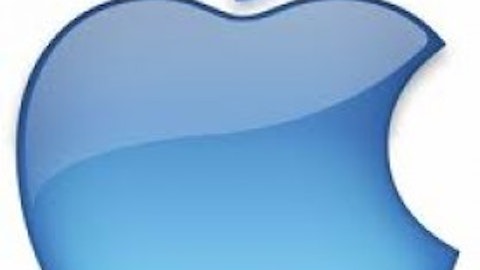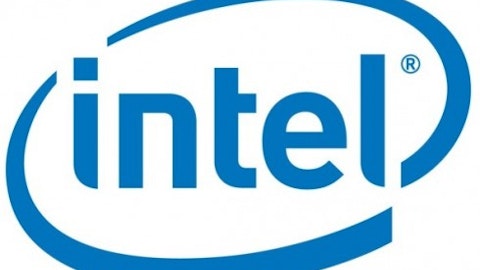The story of a company that’s trying to turn around usually takes on a familiar tone. Tell me if this sounds familiar, “(we are taking) actions to enhance our balance sheet and capital allocation flexibility and exiting some non-strategic businesses.” Let me translate, we don’t have enough cash flow, we need to cut our debt to get out of trouble, and selling some of our businesses is the only option we have. The earlier quote is from the CEO of Pitney Bowes Inc. (NYSE:PBI) Marc Lautenbach, and unfortunately, the company’s business keeps getting worse.
What Could Have Been
Ironically, Pitney Bowes Inc. (NYSE:PBI) competes with several companies that are trying to write their own turnaround stories. For instance, the printing and data management capabilities puts Pitney Bowes in competition with Hewlett-Packard Company (NYSE:HPQ), Xerox Corporation (NYSE:XRX), and Siemens AG (ADR) (NYSE:SI).

In addition, businesses and individuals are moving away from physical mail and toward social networking and other methods of communication. When companies begin offering benefits from going paperless, they are essentially taking a shot directly at Pitney Bowes Inc. (NYSE:PBI) and its troubled peers.
Before And After
The biggest difference between Pitney Bowes Inc. (NYSE:PBI) today versus prior to their dividend cut is the stock’s potential return has changed dramatically. About a year ago, Pitney Bowes paid a yield of more than 10%, and analysts expected earnings growth of about 4% to 6%. With a double-digit yield and low single-digit earnings growth, the stock looked extremely cheap.
Things have changed over the last 12 months. Pitney Bowes Inc. (NYSE:PBI) now yields 5.4%, but what is worse is now analysts expect earnings to contract by 6%. This means all things being equal, Pitney Bowes offers investors a total expected return of negative 0.60%. Everyone knows that Hewlett-Packard Company (NYSE:HPQ) has problems of its own. However, the company pays a yield of 2.3%, and analysts expect earnings to stay flat over the next few years. Even a 2.3% return is better than a negative return.
Xerox Corporation (NYSE:XRX) offers a slightly better option, with a yield of about 2.3%, but with an expected growth rate of about 6.6%. Even better still is Siemens AG (ADR) (NYSE:SI) pays a higher yield of 2.7% and earnings growth in the double-digits. In short, on a sheer yield and growth basis, Pitney Bowes Inc. (NYSE:PBI) is a worse value than any of their peers.
Failing to Deliver
Everyone pretty much knows that Pitney Bowes Inc. (NYSE:PBI) is struggling with lower mail volumes. In the past, I could accept this risk as long as they could keep their free cash flow generation intact. However, with every passing quarter, Pitney Bowes is putting investors in a more and more difficult situation.
A year ago, Pitney Bowes Inc. (NYSE:PBI) suggested that they would generate around $900 million in free cash flow for 2013. A few quarters ago, the company lowered expectations to about $700 million to $800 million. Unfortunately for investors, in the company’s last quarter, this guidance was lowered once again to a range of $600 million to $700 million. While this cash flow would seem to more than cover the company’s now lowered dividend, what if the company’s free cash flow guidance continues to drop?
Speaking of Pitney Bowes Inc. (NYSE:PBI)’ lower cash flow, the company’s payout ratio is still worse than its peers at about 44%. Relative to payout ratios of 19% at Hewlett-Packard Company (NYSE:HPQ), 11.3% at Xerox Corporation (NYSE:XRX), and 32% at Siemens AG (ADR) (NYSE:SI), all of Pitney Bowes’ competition is in better shape.
Comparing Pitney Bowes Inc. (NYSE:PBI)’ balance sheet to their peers, the company carries over $3 billion in net long-term debt compared to at most $175 million in quarterly free cash flow (at $700 million per year). This means Pitney Bowes is carrying debt that is over 17 times their quarterly free cash flow.
By comparison, Siemens AG (ADR) (NYSE:SI) carries $15.75 billion in long-term debt, but generated $1.9 billion in free cash flow last quarter, or a ratio of 8.29. Xerox Corporation (NYSE:XRX) has about $1.9 billion in net long-term debt and generates $540 million in free cash flow, for a ratio of 3.52. The best positioned company is Hewlett-Packard Company (NYSE:HPQ), with not only $1.48 billion in quarterly free cash flow, but also over $3.5 billion in net cash and investments.
The biggest problem facing Pitney Bowes is only 20% of their business is growing. Of their seven divisions, only two showed growth in revenue. Big picture, investors get a negative total return, decreasing cash flow expectations, a huge debt load, and 80% of the business reporting declining revenue. Sorry Pitney Bowes investors, but this may be a company that is beyond saving.
Chad Henage has no position in any stocks mentioned. The Motley Fool has no position in any of the stocks mentioned.
The article 20% Just Isn’t Enough to Save This Company originally appeared on Fool.com.
Copyright © 1995 – 2013 The Motley Fool, LLC. All rights reserved. The Motley Fool has a disclosure policy.





